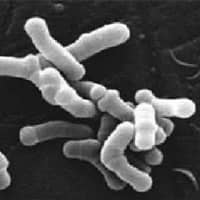Probiotics (and Prebiotics)
The gut can be thought of as a machine for internal fermentation whereby digestion is accomplished via the the endogenous microbiome.[1]
This microbiome is comprised of a diverse microecosystem of trillions of metazoans known collectively as the gut microbiota.
The small intestine contains approximately one million bacteria per mL while the colon contains up to one trillion bacteria per mL.[1:1]
Prebiotics vs Probiotics
Diets rich in plant material have been shown to increase beneficial bacteria in the human gut by supplying fermentable substrates to existing microorganisms.[1:2] Therefore Prebiotics are compounds in food that induce the growth or activity of beneficial microorganisms such as bacteria and fungi.
Probiotics refer to live microorganisms.
Healing Properties
Incorporating external fermentation [probiotics & prebiotics] into the diet provides many adaptive benefits:
- Increases macronutrient absorption[1:3]
- Increases the bioavailability of micronutrients[1:4]
- Some of which are essential for brain development and function[1:5]
- Supports internal fermentation by the endogenous microbiome[1:6]
- Immune reinforcing benefits[1:7]
- Fermentation provides increased macronutrient digestibility for both carbohydrates and proteins.[1:8]
- In the colon, vitamin K2 is synthesized by multiple genera of bacteria.[1:9]
- B complex vitamins are produced from carbohydrate fermentation by alcohol-producing yeasts and Lactobacillus species.[1:10]
- Externally fermenting foods prior to consuming them can increase the amounts of B vitamins (thiamin, riboflavin, and niacin) by up to 10-fold.[1:11]
Breakdown of Anti-nutritonal Factors (ANFs)
ANFs are compounds found in staple cereals, grains, seeds, legumes and tubers that bind essential nutrients, preventing their absorption in the body.[1:12]
Phytate is a salt formed from plants’ phosphorus storage compound, phytic acid.[1:13]
Oxalate is commonly found in leafy vegetation, nuts, and tubers; it forms chelates with essential nutrients iron, magnesium, and most importantly, calcium.[1:14]
Iron, zinc, magnesium, and calcium are thus particularly impacted by ANFs found in raw plant matter, yet sufficient absorption of these is critical for life.[1:15]
Humans produce little phytase in their small intestine. The bioavailability of minerals is therefore greatly reduced.[1:16]
Lactobacillus bacteria-driven fermentation is an alternative to phytase – by lowering the pH, it provides a favorable environment for both bacterial and endogenous phytase within the plant material to hydrolyze the binding phytate and release the bound minerals.[1:17]
Oxalate can also be degraded through Lactobacillus fermentations, either externally or internally.[1:18]
- Degradation of phytate by external fermentation has been shown to be more effective than heat treatment or cooking due to the decreased phytase bioactivity at a temperature above 80°C.[1:19]
External fermentation can render poisonous foods edible
Lactobacillus rhamnosus GG (LGG)
Lactobacillus rhamnosus GG, a type of probiotic from the gut of healthy individuals, is characterized by high and sustained adhesiveness to the intestinal mucosa.[2]
Healing Properties
Antiinflammatory
Administration of LGG downregulates systemic inflammatory response.
Bone Health
LGG could increase intestinal barrier integrity and downregulate the systemic inflammatory response, resulting in attenuation of bone loss.
Gut Health
LGG reconstructed the community structure of the gut microbiota and promoted the expression of preponderant metabolites (LysoPCs) to suppress leukotrienes (inflammatory mediators produced in leukocytes by the oxidation).
LGG further improved the intestinal integrity and inhibited the inflammatory response systemically, resulting in attenuation of TDF-induced bone loss.
Disease / Symptom Treatment
Pneumonia
Administration of LGG improves the prognosis of pneumonia by upregulating regulatory T cell (Treg) levels and downregulating the systemic inflammatory response.
Leaky Gut Syndrome
LGG could increase intestinal barrier integrity and downregulate the systemic inflammatory response.
Alcohol Induced Liver Injury
LGG ameliorates alcohol-induced liver injury by improving intestinal integrity.
Osteoperosis
Potential therapeutic strategy for prevention or treatment of osteoporosis.
Title: Fermentation Technology as a Driver of Human Brain Expansion
Publication: Preprints
Date: October 2020
Archive Link
Title: Lactobacillus rhamnosus GG attenuates tenofovir disoproxil fumarate-induced bone loss in male mice via gut-microbiota-dependent anti-inflammation
Publication: SAGE - Therapeutic Advances in Chronic Disease
Date: July 2019
Archive Link
